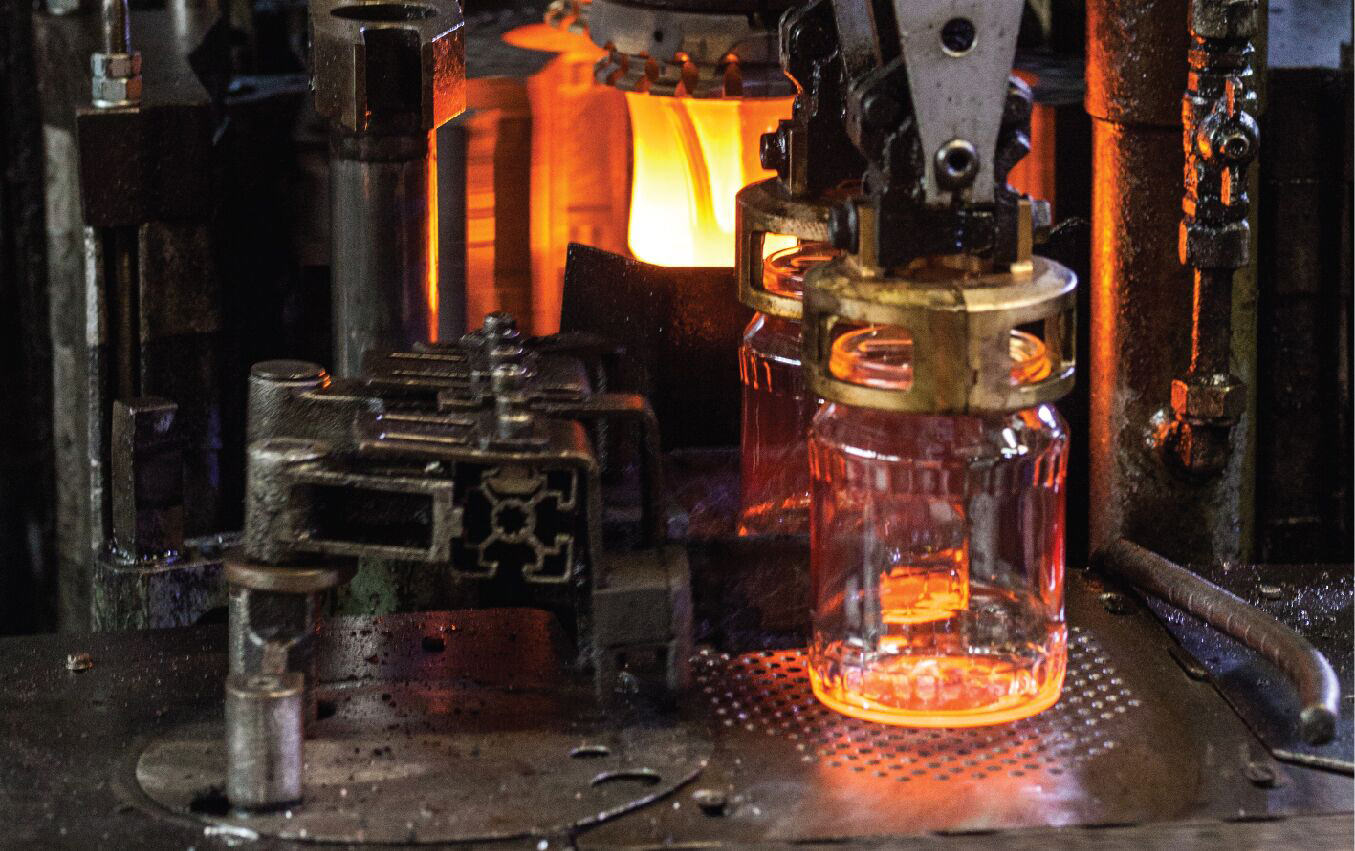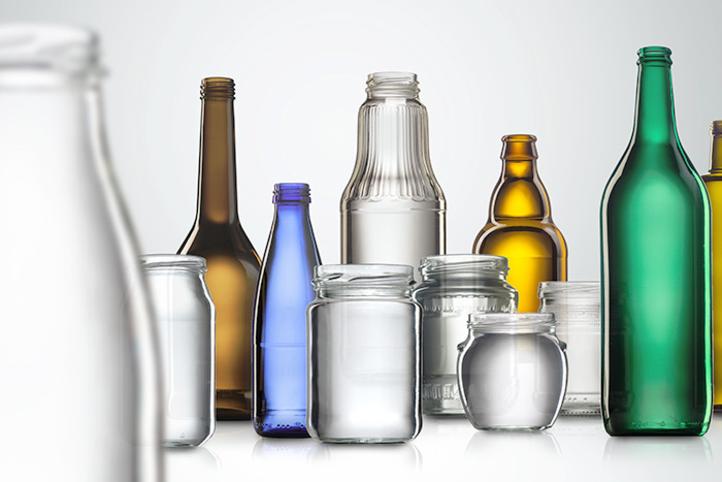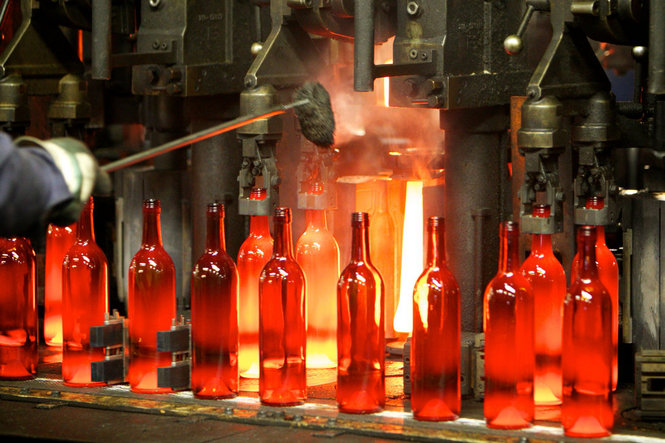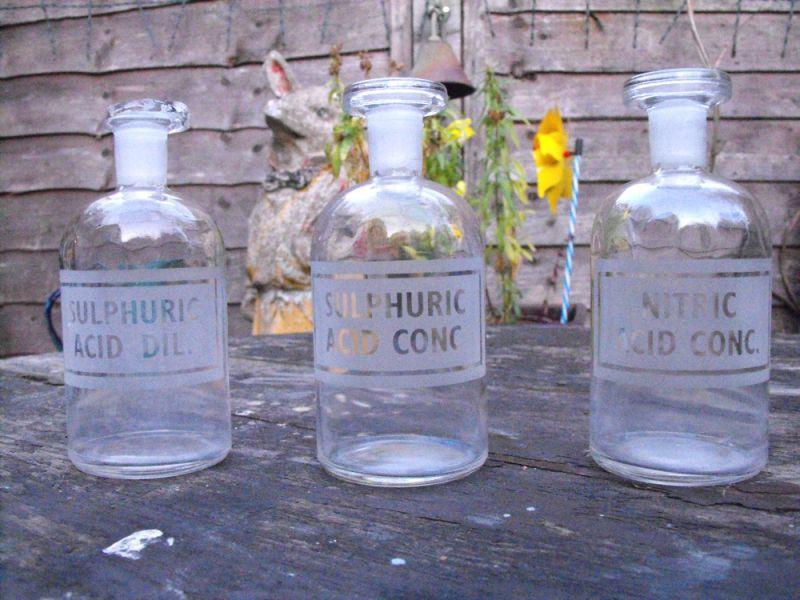Author:Melissa Bryant | TIME:September 29, 2019
How are glass bottles made? In the modern glass bottle manufacturing, they are made by an automatic glass making machine that combines pressing (forming the opening) and blowing molding process ( forming the hollow body of the container).
The glass container is made essentially of raw materials rich in quartz sand, soda ash, and limestone. So it is 100% infinitely recyclable and reusable, and the bottle can be reused about 30 times.

That's one of the reasons why glass containers or glass bottles are widely used in food, medical, or cosmetics for storing food seasonings, sodas, spirits, cosmetics, pickles, and preservatives in daily life. In this article, you will know the advantages of glass containers and the glass bottle molding process.
Glass container plays an important role in beverage packaging. Here are some reasons:
1. The glass material has good barrier properties, which can prevent gas such as oxygen from intruding into the internal contents, and prevent volatile contents from volatilizing into the air.
2. Glass bottles can be reused to reduce packaging costs.
3. Glass makes it easier to change color and transparency.
4. Glass bottles are safe and safe, have good corrosion resistance and acid corrosion resistance, and are suitable for the packaging of acidic substances (such as vegetable juices, beverages, etc.).
5. In addition, due to glass bottle production lines suitable for automatic filling, the development of automatic filling technology and equipment is more mature, so use of glass bottles to package liquor and beverages has certain production advantages in China.

A glass bottle can be made by the Blow and Blow or the Press and Blow process.
The manufacturing process begins with collecting recycled glass (cut into small pieces) and adding four other basic raw materials: silica, soda, limestone, and feldspar. All of these mixtures are stored and collected and melted at a high temperature of 1,500 degrees Celsius until they become molten material.
Glass forming method
When the mixture melts, the blade cuts and transfers it to the molding machine. The liquid glass arrives in this mechanism and forms the neck and basic shape of the bottle. A bottle with a bottleneck and a general glass bottle shape called a parison. Finally, we will get the final glass bottle.
Press-and-Blow
The pressure blowing process is the most common method in glass bottle manufacturing to create wide mouth jars. It uses a separate (IS) machine that divides it into different sections to simultaneously batch glass bottles of the same size.
The molten glass was cut with a shearing blade and a specific gob size was obtained. The gob falls into the machine due to gravity, and the mental plunger pushes the cut glass down into the mold, waiting to form and become a parison.
The next step is to place the parison into the blow mold and reheat it until it is soft enough to achieve the different glass sizes. The air is injected to blow the container by reheating to the blow molding temperature.
Blow-and-Blow
The Blow-and-Blow process is used to create glass bottles with different neck thicknesses. The molten glass gob falls into the mold then uses compressed air to form the neck and basic shape, flips, and reheats, and adds air again to blow the container into the final shape. Finally, the glass bottle is blown into the desired shape using compressed air.

1. Cutting or cutting glass with a diamond saw
Diamond-cut glass cutter technology is a glass processing technique to cut glass with a diamond-pointed saw.
2. Engraving
Glass engraving is a laborious technique to design the surface of the bottle.
Direct engraving
Direct engraving is one of the most laborious glass technology. Drawing directly on the glass with a pencil made of steel and diamond powder. In this way, we will get clear and linear strokes.
Acid etching
This process is to immerse the glass we are processing in a mixture of hydrofluoric acid, which is the only acid that reacts with the glass. This process is very dangerous and requires the use of gloves, goggles and a mask to avoid the harm of inhaling gas. In many cases, this technique can be used to achieve a polished or matte finish.
Sandblasting engraving
This technology is done by applying pressurized blasting, which wears the glass surface to give it a matt appearance and allows us to create a personalized finish that protects a portion of the glass from being transparent and sprayed.
Sandblasted glass technology
As you can see, the world of glass technology is fascinating, which offers a variety of finishes and shapes.

In order to get glass bottles of different sizes or glass containers with different patterns, we use different techniques. In this article, we introduced how are glass bottles made.